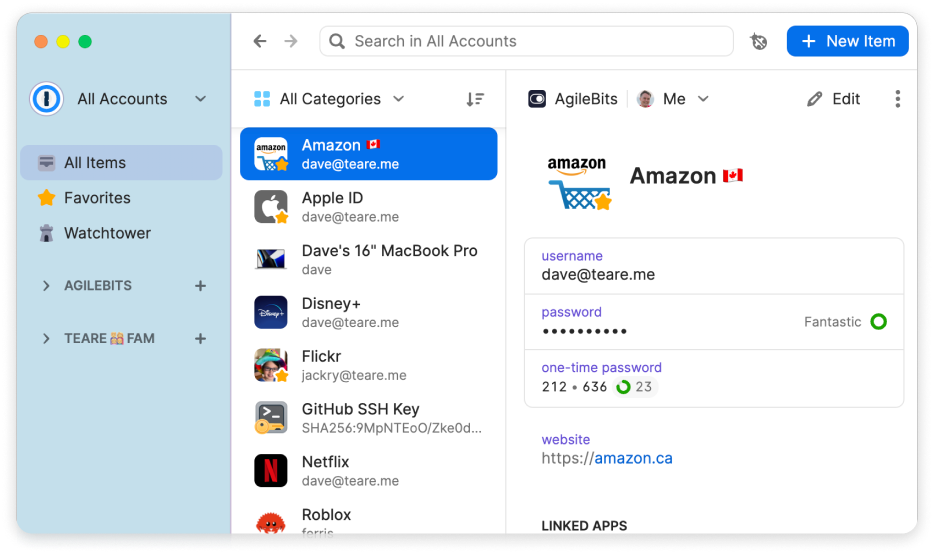
Are you worried the upcoming recession will turn your business to dust? Then you might find this recession survival toolkit of some use.
With global growth predicted to slow down by 70%, millions of people are anxious about what’s to come.
But I’m here to offer a solution to your concerns: technology.
This article will explore the best tools to use during a recession.
“Yeah, right! I don’t wanna be spending more during a recession!”
Well, if your goal is to retain your employees, satisfy customers, and improve business outcomes, you will have to spend some money. At first.
Once you’ve acquired the tools needed to scale, you’ll be able to put your feet up and reap the benefits for years to come.
So are you ready to find out how tech can help during a recession?
Then follow me as I take you through all you need to know to succeed during the economic downturn.
- How can technology help you withstand a recession?
- Benefits of using this recession survival toolkit
- Recession survival toolkit: The best tools to use
- In a recession, tech is the way to go
How can technology help you withstand a recession?

Making your business recession-proof can seem like an impossible task. There’s so much to take care of, yet the growing economic uncertainty can leave you and your employees feeling tired, inefficient, and full of doubt.
Worse still, the money seems to be flying away from you as soon as the monthly paycheck lands in your account. And the same seems to be happening to your business.
Luckily, there are several ways to leverage the situation. And tech is, without a doubt, one of the things you need.
So how to prepare for a recession? The answer is simple: Invest in tech.
Incorporating relevant technologies into your business will give you a massive boost, even if it sounds a little counterintuitive. Crisis often comes with new opportunities, so you want to be prepared for when that crisis is over.
With this in mind, let’s take a look at how technology will help you withstand a recession.
Increased efficiency and productivity
Technology streamlines processes and automates tasks, freeing everyone’s time to focus on more strategic work.
It’s been suggested that employees become more productive when new technologies are implemented. Things like automations are a great example of that.
Say you’re a manager in a large manufacturing company. You have to send hundreds of emails a day and issue multiple approvals every few hours.
If you were to do all this manually, it would likely take weeks. That’s where automations come in.
They allow you to preview all approvals from a single dashboard and, with a single click, either endorse or reject them.
What about all the emails that are yet to be written?
With automations, you can create a few templates and then send them out in bulk. You can even customize them so that every recipient’s name appears at the top of the email.
In summary, technologies such as automations will massively increase your productivity while making your business more efficient.
Improved collaboration
Utilizing tools for a recession will encourage your team to work more effectively and motivate them to achieve their goals. This may be especially important if your team works remotely or is scattered across the globe.
There are several ways tech will improve collaboration in these cases. Here are some examples:
- Video conferencing. Software such as Slack or Zoom enables remote teams to communicate and collaborate in real-time, regardless of their location.
- Project management tools. Tools such as Asana, Trello, and Jira can help you keep track of projects and tasks, assign responsibilities, and coordinate easier.
- Cloud-based file sharing. Storing business files in a secure and accessible place is vital. Platforms like Google Drive, Dropbox, and OneDrive can prove useful, especially if you have a remote team.
- Real-time collaboration. Tools such as Google Docs and SharePoint facilitate cooperation. They allow multiple people to work on the same document simultaneously, reducing errors.
- Instant messaging. Apps such as WhatsApp can be valuable for communicating quickly and easily, fostering a more collaborative work environment.
- Virtual whiteboards. Brainstorming, sketching, and planning projects in real-time can be tricky. By incorporating Google Jamboard, Microsoft Whiteboard, and Zoom Whiteboard, you’ll improve team collaboration and foster creativity.
Many of the software I mentioned provide a great solution for remote work, collaboration, and attending meetings from anywhere. That’s not to say office workers won’t benefit! Most of these can be easily added to your tech arsenal, whatever your company’s working arrangements.
Enhanced decision-making
You can use technology to gather and analyze data, make predictions, improve decision-making processes, and achieve better business outcomes:
- Data analytics tools collect and analyze vast amounts of data, providing insights and information about your competitors.
- AI-powered tools can aid you in identifying patterns and providing recommendations based on that data, reducing the time and effort required to make decisions.
- Predictive modeling software uses algorithms to predict future trends, helping you make good judgments based on data-driven insights.
- Business intelligence platforms provide real-time dashboards and reporting capabilities, giving decision-makers access to the data they need to make informed decisions.
- Machine learning software lets you identify hidden patterns in data, reducing the risk of errors.
- Collaboration tools such as Microsoft Teams, Slack, and Asana enable you to share information and ideas, provide feedback, and make decisions in a collaborative environment.
Increased competitiveness
By investing in technology, you’ll increase competitiveness and achieve greater success in the marketplace.
For example, technology can automate manual processes, reducing errors and freeing time for employees. They will then be able to focus on more pressing problems, resulting in greater work efficiency.
Many software tools will streamline your operations and reduce further costs while enriching the customer experience. Those will often come with data analysis functions, as well as security features to protect your data from cyber-attacks.
Improved customer experience
Technology allows companies to better understand customer needs and preferences and provide tailored products and services.
Increased flexibility
Technology will increase your business’ flexibility and make you respond more quickly to changing market conditions and customer needs.
It’ll also help with the following:
Remote work. The rise in cloud tools, video conferencing, and collaboration tools means employees can work from anywhere, providing greater business flexibility. This will also make it possible for you to tap into a global talent pool.
Automation. Automating routine tasks improves flexibility because it reduces the need for manual data entry.
Flexible working hours. Technology may help you offer flexible work hours to your team so they can work from home or outside traditional office hours. This will drastically improve their work-life balance and increase job satisfaction.
Mobile devices. Mobile devices are becoming increasingly popular for quick information sharing and communication between employees. These solutions may help your workers become much more flexible.
Cost savings
Cutting costs will never be as important as it is during a recession. And that’s where technology can really make a difference.
If you’re automating routines and repetitive tasks, such as data entry and invoicing, you’ll reduce the time and resources needed for these tasks. The result? Lowered operating costs.
To make further savings, you could move your data and applications to the cloud to reduce the costs associated with hardware, software, and maintenance.
And what about traveling for meetings? Virtual meetings will eliminate the need for travel, lowering expenses.
But what if your business relies on selling physical items to customers? Set up an e-commerce platform to reduce the costs of physical stores (such as rent and utilities).
Benefits of using this recession survival toolkit
If you’re determined to survive the recession, investing in tech can be your best bet. And here’s how to do it:
1. Improve efficiency
Embrace workflows and automation tools that will take away the burden of manual tasks and eliminate human error.
Workflow automation software, specifically, will make staying productive a breeze.
2. Solidify relationships with customers
You can do this by giving discounts, offering product guides and tutorials, or simply sending informative emails.
Always provide value to your customers and find new ways to keep them interested in your product or service.
3. Retain your people
Interestingly, retaining employees during a recession can be difficult. Many will look for better-paying jobs during this time.
To prevent your best talent from leaving your side, show them you care. If possible, propose hybrid or remote working, flexible hours, and work incentives.
Recession survival toolkit: The best tools to use

During a recession, businesses must adapt to changing economic conditions and find ways to maintain competitiveness and productivity.
By using relevant tools, you’ll be well-equipped to deal with all the challenges a recession can pose.
That’s why I’ve devised the ultimate list of the best tools to use during a recession.
Here we go!
Recession survival tool #1: Workflows and automations
Workflows and automation software such as Process Street can streamline business processes and automate repetitive tasks. These tools will make your work more consistent and productive. They also come with comprehensive data analysis tools to help you navigate the changing economy.

From making checklists to onboarding new employees successfully, workflow software can really enhance your business capabilities.
And that’s not it. Process Street offers thousands of integrations so you can connect it to the apps you’re already using.
Recession survival tool #2: Open banking
Using open banking can greatly reduce financial burdens.
What is open banking? It’s a way to move and manage money through the use of regulated financial services and apps.
Open banking provides access to real-time financial data, enabling you to make informed decisions and better manage your business cash flow during uncertain times.
Process Street swapped all their invoices to go via Wise in a bid to save transactional costs.
And it worked!
The result was greater operational efficiency thanks to lower conversion rates and fees.

Open banking platforms are also perfect for remote teams because they’ll allow you to pay your employees on time, wherever they are.
Recession survival tool #3: Cloud-based apps
Cloud-based tools allow businesses to work remotely and access data and applications from anywhere, providing flexibility and reducing the need for expensive IT infrastructure.
Talk about reducing costs.

Cloud-based apps promote team working and feedback-sharing while also offering robust security options.
If you need to work on a project as a team, apps such as Google Drive can make an incredible difference in communication and quality of work.
Recession survival tool #4: AI chatbot
You’ve likely heard of ChatGPT. As nuanced as it is, the app can help you draft quick messages and emails. The basic version is free to use, although it’s often over capacity and can be unavailable for hours on end.
But there are other AI chatbots out there, such as Intercom.

Intercom helpdesk-style technology can automate customer service and support, providing fast and cost-effective solutions for customers. They will save you money and allow buyers to access in-depth support.
Recession survival tool #5: Video conferencing
Your team has probably already taken advantage of video conferencing technology during the COVID pandemic.

Being a quick and easy way to communicate and collaborate, tools like Zoom can reduce the need for travel and minimize the impact of social distancing measures.
Recession survival tool #6: Password managers and security software
Password managers and security software can protect sensitive files and documents, reducing the risk of data breaches and reputational damage.

Investing in robust security software is also important, so look for one that includes malware protection, file encryption, and monitoring tools. Some antivirus tools come with password managers already included, so that may also be of interest.
Recession survival tool #7: Employee recognition tools and incentives
Everyone wants to feel recognized and cared for. And those who feel recognized will stay with you longer.

Employee recognition tools can help you engage and motivate employees during a recession, boosting morale and productivity.
Some other ways you can recognize your employees by using tech:
- Providing employee benefits
- Team getaways
- Shoutouts on designated Slack channels
- Giveaways, discounts, and vouchers
- Team bonding games with prizes
Recession survival tool #8: Data analytics
Data analytics apps like Python provide access to real-time business data so you can identify new opportunities and adapt to changing conditions.

Python is easy to learn and very versatile, making it a useful tool for beginners. It also comes with everything from data scraping to analysis and reporting.
And the best part is that Python is open-source software, meaning that it’s completely free to use.
In a recession, tech is the way to go
Technology gives you the capacity to do more with less and maintain growth.
During a recession, it can help you become more efficient, reduce business costs, and increase productivity.
This is especially important when there is a decrease in economic activity, and companies must find ways to remain competitive.
So embrace technology and don’t be scared to invest in it. If you choose wisely and shop around, you’ll likely find amazing tools to boost your company’s progress.
And thanks to tech, not only will you survive in a recession, but you’ll thrive in it, too.
Do you think tech is the way to go during a recession? Let me know in the comments below!







 Workflows
Workflows Projects
Projects Data Sets
Data Sets Forms
Forms Pages
Pages Automations
Automations Analytics
Analytics Apps
Apps Integrations
Integrations
 Property management
Property management
 Human resources
Human resources
 Customer management
Customer management
 Information technology
Information technology



Anna Hase
Anna is a coffee-obsessed content writer with a master's degree in psychology. Her main area of interest is employee psychology. When she's not writing, she's either reading or lifting weights at the gym.